The views expressed in our content reflect individual perspectives and do not represent the authoritative views of the Baha'i Faith.
Recently, a neighbor posted some materials from a local high school district’s new Social Emotional Learning programs (SEL) on our neighborhood chat group, asking, “Isn’t this CRT (Critical Race Theory)?”
The post drew a lot of attention. The stated goals of the high school SEL programs were to promote such virtues as justice, kindness, inclusiveness, and respect, regardless of someone’s social status or skin color. The emphasis was on equality and equity.
To me, and to others in the group, this sounded like a fine set of goals, aimed at making each child’s school experience a positive one, and nurturing their uniqueness and talents. But that wasn’t the way the woman who posted it (I’ll call her Michelle) saw things. She expressed fear that an unspecified “they” were rolling out, not a set of constructive values, but indoctrination into something possibly unpatriotic, socialist, and communist.
RELATED: How to Be a Better Ally for Racial Justice
Several of us questioned our neighbor’s use of the word “indoctrination.” Was it indoctrination to encourage our children to be just, kind, inclusive, and respectful of others? Surveys performed all over America had shown that parents wanted their children to be exposed to these virtues. While some of us applauded the efforts of the high school district, others opined that this was most definitely Critical Race Theory or CRT “dressed up” with a new name but with the same unspecified agenda. Schools, they said, should teach Math and Science and leave ethical and moral education to parents. At most, they should teach only generic and positive encouragement to be kind.
This is problematic. because some kids aren’t getting that instruction at home, which has led to disruption, bullying, and much worse behavior in the classroom and schoolyard. Even the best STEM education cannot teach our children how to behave respectfully toward each other. How, I asked, could we expect them to learn (and teachers to teach) in an atmosphere of distrust and hostility? How are we blind to the fact that our children do not get the academic education we want them to have because they are battling the environment in which they are expected to learn?
When I added that I wanted what I teach my children at home to be supported by their education, and that I was sincerely glad to see these objectives being stressed in our schools, Michelle replied that this would be fine if the goals were really the ones stated by the district, but she suspected they were just a way for Critical Race Theory to begin “creeping into our schools.”
Herein lies a core societal problem: naked distrust. Michelle could not imagine that these educators were looking for a solution to the problems faced by their students. She preferred to believe that they had a secret agenda and malign motives. Why she and the neighbors who agreed with her would suspect these people of trying to sabotage or even harm their students is a subject for another time – but my question was how SEL programs aimed at teaching inclusion and respect had suddenly become the dreaded step-child of Critical Race Theory.
Several of us in the chat group made the point that CRT is a college-level course of legal study aimed at exploring why, even after the Civil Rights Movement was supposedly successful, there is still racism baked into so many of the systems in our nation and why there are still large pockets of deeply ingrained prejudice.
That was precisely the problem, Michelle and others insisted – systemic and institutional racism were CRT propaganda, and their very mention proved that CRT was being taught in our primary and secondary schools. In their view, whether you called it CRT, SEL or DEI (diversity, equity, inclusion) it made all White people out to be villains, shamed White children, and made them feel bad about the color of their skin.
I didn’t comment on the irony of this in light of the history of race in America, but said I was happy to have my children taught the pimply, imperfect, and not-always-pretty history of our country. Exploration of such things as systemic or structural racism (which is NOT the idea that all White people are racist) shouldn’t have to creep in; they should be acknowledged, and our children encouraged to understand and seek to remedy them — to bring this imperfect union to a healthier state and to a new stage in its development.
I proposed to my neighbors an alternate reading of the situation: to consider the possibility that this sort of program is not something to be feared, but to be welcomed. Our children are this nation’s future. They need the clear-eyed vision to understand the issues and master the tools to heal our country’s wounds so they can fix what is broken.
During his sojourn in America, expounding his father Baha’u’llah’s teachings, Abdu’l-Baha often spoke of the Baha’i prescription for this kind of healing, as he did in this speech in Philadelphia:
Some are imperfect; they must be perfected. The ignorant must be taught, the sick healed, the sleepers awakened. The child must not be oppressed or censured because it is undeveloped; it must be patiently trained. The sick must not be neglected because they are ailing; nay, rather, we must have compassion upon them and bring them healing.
RELATED: Oneness, Sameness, and Power: Can the Races Unite?
To my neighbors I said that the high school district was not proposing to teach that White people (whatever defines “White”) should be ashamed of the color of their skin, or that all White people are racist. They were proposing to teach that we must be aware of the divisions in our society before we can successfully heal them and achieve our professed goal: a free, inclusive nation, a nation in which each member is respected and valued, as Martin Luther King hoped, for the content of their character and not the color of their skin or the prestige of their social status or their point of origin.
If we sincerely want to live in an America that rises to the ideals enshrined in our founding documents, this awareness is not something to be feared. The proposed educational objectives offer to our children — the next generation of community members, leaders and educators — the tools needed to build that unified society.
I have known a score of educators at all levels of schooling; my son is one of them. This is why I trust that the school district’s objectives are 180 degrees the opposite of what is claimed by their detractors. Racism in schools and in the community hold us back as individuals and as a society. No one is more aware of this than educators working in an environment in which racism exists, whether in the form of birds of a feather segregation or bullying or gang tensions.
The goal of teaching the history of race in America is to understand why racism continues to exist, and to empower ourselves and our children to eliminate it.
We do not need to imagine ill-defined ulterior agendas pursued by unspecified groups to explain why any high school district feels it necessary to focus on teaching our children why these racial tensions exist and how they can develop the virtues to navigate them.
If you have a disease, you look at the symptoms so you can diagnose it, treat it, and eliminate the disease and the misery it causes. If you fail to consider the symptoms and what has caused them, the disease will not be diagnosed and it will not be cured.
Yes, some of the history of America is painful and shameful. That makes us uncomfortable, but discomfort spurs growth and transformation. There is no reason for our children, being taught this history, to feel personally responsible for anything but what they choose to do or not do with the knowledge.
Understanding our past can help us build our future, as Abdu’l-Baha said in Paris in 1911:
The diversity in the human family should be the cause of love and harmony, as it is in music where many different notes blend together in the making of a perfect chord. If you meet those of different race and colour from yourself, do not mistrust them and withdraw yourself into your shell of conventionality, but rather be glad and show them kindness. Think of them as different coloured roses growing in the beautiful garden of humanity, and rejoice to be among them.




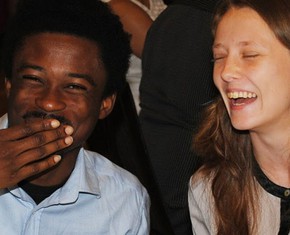

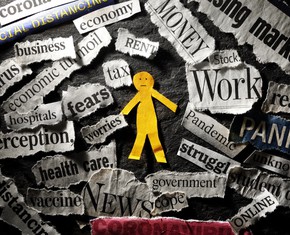

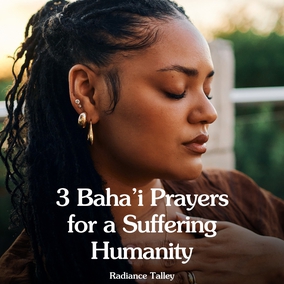

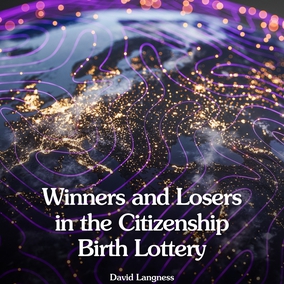

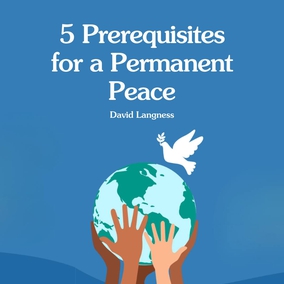



Comments
Sign in or create an account
Continue with Googleor